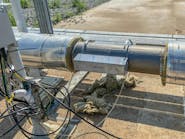The Environmental Protection Agency (www.epa.gov) finalized the Pretreatment Streamlining Rule, which revises how industrial and commercial facilities manage their wastewater discharges before sending it on to publicly owned treatment works (POTW) for final treatment.
The pretreatment program requires manufacturing dischargers to use treatment techniques and management practices to reduce or eliminate the discharge of harmful pollutants that could compromise municipal treatment plant processes or contaminate waterways. The new rule maintains that protection, but removes process requirements for industrial operations including sampling their discharges for pollutants that are not present at their facilities. This change will substantially reduce the costs to facilities, while still holding those facilities to the same federal discharge limits currently in place under Clean Water Act regulations, according to the EPA.
POTWs will be granted greater flexibility to issue “general permits” for effluent to multiple industrial users within the same treatment district that have similar operations, discharges, and requirements. The EPA estimates the rule will save 240,000 employee hours or $10.1 million annually currently expended on pretreatment requirements.
The Pretreatment Streamlining Rule updates the National Pretreatment Program, which has been in place for more than 30 years. For more information, visit www.epa.gov/npdes/pretreatment.
— Flow Control Staff

